Businesses are moving rapidly to the cloud, but that shift brings new risks. Gartner predicts that through 2025, 99% of cloud security failures will be the customer’s responsibility — a stark reminder that protecting cloud environments must keep pace with adoption. Every unprotected system, application, or workload is a potential entry point for attackers, with consequences for revenue and reputation.
“Cloud security is the quiet architecture of trust, shaping how businesses endure, adapt, and thrive in a world that never stops shifting,” says Philipp Graves, CEO of Cytranet. Cloud security keeps data, applications, workloads, and infrastructure protected while enabling productivity and growth.
This article explains what cloud computing security means, why it matters, and how to apply it effectively. You’ll get core principles, real-world benefits, and practical steps to strengthen your cloud environment.
What is Cloud Security and How Is It Different From Traditional IT Security?
Cloud security is the set of procedures, tools, and technologies that protect digital assets hosted in cloud environments. Traditional IT security focuses on on-premises hardware, physical servers, and perimeter defenses. Cloud security extends protection to virtual servers, cloud-native applications, and third-party-managed infrastructure, where shared architecture and global accessibility introduce different vulnerabilities.
Key cloud advantages when secured properly:
– Scalability and flexibility: Protect multiple workloads without adding physical infrastructure.
– Centralized management: Enforce policies across environments from a single console.
– Operational efficiency: Cloud providers handle routine updates so internal teams can focus on strategic work.
Cloud Security Threats to Watch For
Cloud environments face diverse threats that can undermine data integrity and operational continuity:
– Malware and ransomware: Attackers can encrypt or exfiltrate data via weak access points.
– Phishing: Compromised credentials often grant cloud access.
– Misconfigurations: Open storage buckets and default credentials remain leading causes of breaches.
– Insider threats: Improper access by employees or contractors can lead to accidental or malicious leaks.
– Multitenancy risks: Shared public cloud infrastructure can expose tenants to collateral vulnerabilities.
A lack of visibility and monitoring lets attackers dwell undetected. Proactive defenses and continuous visibility are essential to detect and contain breaches early.
Infrastructure Security in Cloud Computing
Infrastructure security protects the physical, virtual, and network components that deliver cloud services. Responsibilities are shared: providers secure physical data centers and underlying infrastructure, while customers secure applications, user access, and data.
Core infrastructure controls include:
– Physical security: Data center controls against tampering and unauthorized access.
– Virtualization security: Isolation for virtual machines and containers to prevent cross-tenant attacks.
– Server and OS management: Patch management and secure configurations.
– Runtime protection: Monitoring application execution to block unauthorized processes.
Robust infrastructure security reduces attack surface and supports higher-layer protections.
Cloud Workload Security: What and Why
Workload security protects applications, processes, and data as they run in the cloud. Each service model shifts responsibility:
– SaaS: Providers manage most infrastructure; you secure user access and sensitive data.
– PaaS: The platform handles OS and runtimes; you secure apps and integrations.
– IaaS: You control OS, apps, and configs, making security largely your responsibility.
Best practices: enforce identity and access management, encrypt data in transit and at rest, apply regular patching, and use automated threat monitoring.
Data Security in the Cloud
Data security ensures confidentiality, integrity, and availability of sensitive information. Foundational measures include encryption, role-based access controls, data loss prevention (DLP), and reliable backups and recovery plans. Misconfigured storage and inadequate access controls are common initial attack vectors, so strong governance and monitoring are critical.
Approaching Cloud Security in Your Organization
A solid cloud security program combines tools, processes, and frameworks:
– CSPM to find misconfigurations
– SIEM for detection and response
– IAM for enforcing least privilege
NIST’s five functions—Identify, Protect, Detect, Respond, Recover—provide a practical structure for program development. Smaller organizations can start with managed services and core controls; larger enterprises need comprehensive monitoring and compliance programs.
Compliance and Hybrid/Multi-Cloud Considerations
Regulations like GLBA, HIPAA, and the CLOUD Act shape how data must be stored and accessed. Compliance strategies include data masking, regular audits, and aligning policies with regulatory requirements.
Hybrid and multi-cloud environments require workload segmentation, redundancy planning, and balanced access control to avoid introducing new vulnerabilities while maintaining scalability and collaboration.
Layered Defense
A secure cloud relies on multiple layers: infrastructure protection, data security, workload defenses, compliance oversight, and threat detection. Each layer assigns responsibilities between provider and customer and uses specific tools and practices to close gaps.
Fortify Your Cloud with Cytranet
Maintaining cloud security is an ongoing effort. Continuous monitoring, proactive threat management, and regular updates are essential. Cytranet brings 17+ years of IT and cybersecurity experience and certified professionals to reduce risk, protect customers, and improve operational resilience.
What you gain with Cytranet:
– Risk reduction through continuous monitoring
– Client protection and trust preservation
– Operational resilience and uptime
– Best practices aligned to compliance
– Expert partnership tailored to your environment
Contact Cytranet to assess your cloud environment, implement best practices, and schedule a consultation to safeguard your workloads and data.
The post “What is Cloud Computing Security?” appeared first on Cytranet.


